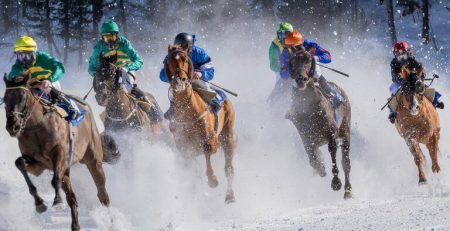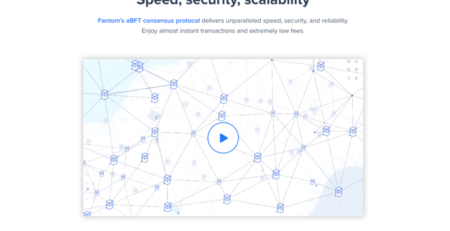A Review on MiniVerse Finance, the Fantom-based Stablecoin Project –
[ad_1]
Recent analytical data shows that the overall stablecoin industry has a market cap of $185.4B. Stablecoin assets are, by definition, virtual currencies tied to the value of another commodity or cryptocurrency. These assets are becoming a favourable financial tool to most investors since they experience lower volatility patterns compared to other virtual assets.
Taking up the same idea is MiniVerse Finance, an innovative stablecoin project that runs on the Fantom blockchain. The protocol relies on an algorithmic strategy that helps maintain a 1:1 peg with USDC.
In the MiniVerse project, users will encounter three types of digital coins (MvBOND, MvDOLLAR, and MSHARE). These assets also work to ensure that MiniVerse has a balanced USDC peg.
MiniVerse Finance borrows some of its concepts from pre-existing algorithmic projects such as Tomb Finance and Basis Cash.
Hence, MiniVerse can develop its own unique system that continuously modifies MvDOLLAR’s supply based on USDC’s value.
As mentioned earlier, MiniVerse comprises three types of digital tokens: MvBOND, MSHARE, and MvDOLLAR. The following brief will shed some light on the importance of these assets in the MiniVerse Finance protocol.
The MvDOLLAR works as a stablecoin token that supports multiple use-cases. Investors can use this coin on various exchanges, GameFi, and NFT assets. Through the project’s mechanism, MvDOLLAR can maintain a firm 1:1 peg with USDC in most cases.
MvBOND is the second digital token on MiniVerse that helps keep the MvDOLLAR and USDC peg above or within the 1:1 ratio. Bonds perform this task when an epoch contraction duration occurs.
In a blockchain network, an epoch period generally describes the period used to validate blocks on a chain. It can further highlight an event such as the reward distribution period.
MvBONDS, therefore, begin to circulate once the time-weighted average price of MvDOLLAR drops below the 1:1 USDC range. The MvBONDs are available for purchase using the MvDOLLAR token.
The protocol then burns every MvDOLLAR used in buying MvBONDS, making it an appropriate strategy that boosts the dropping peg.
MvBONDS can remain valid for redeeming at any time, unlike other algorithmic projects which have expiry dates. In that regard, investors can redeem their MvBONDs for additional MvDOLLARs if the peg goes beyond the 1:1 ratio.
Holders are qualified to redeem their MvBONDs only if the Treasury has a higher MvDOLLAR balance. A significant MvDOLLAR amount will be available when MiniVerse is in an epoch expansion phase.
MSHARE token functions as an asset that helps determine the shareholder’s ability to keep MvDOLLAR’s peg in place. Holders who stake their MSHAREs in the boardroom earn MvDOLLAR rewards generated from an epoch expansion.
Out of 67,012 MSHARES, developers and future LP rewards will receive an allocation of 25,000 tokens with a linear vestment period of 300days. Rewards worth 41,000 MSHAREs will sort out liquidity providers across various share pools.
Land NFTs plan on taking up 1010 MSHAREs within the first two weeks of the protocol’s launch. Lastly, the protocol will conduct an initial minting process of 2 MSHARES once contracts are developed.
MiniVerse Finance also has a miniVIP pass that gives users access to a 5000 token supply with a mint price of $500 USDC. There is also a 3D animated pass that comes along with it.
When launched, users earn weekly lifetime MvDOLLAR dividends from slot machine profit and other GameFi or gamble products such as coin toss and predictions.
Furthermore, they receive 12 free spins daily, one mega bluechip NFT raffle entry for the weekly bluechip NFT raffle. Notably, this raffle is only available to MiniVIP holders. The holders can also freely mint to the metaverse 3D avatar, which will be $250 UDSC mint and any other metaverse integration.
They can access the new VIP zone in the discord server, where there will be special events and prizes that are only happening in the VIP zone. Finally, they will also receive future rewards and benefits from all miniverse GameFi or casino products and the web3 integrated minigame(excluding breeding game).
According to the protocol, a stable asset linked to the value of USD is suitable to run a GameFi ecosystem. The project looks forward to introducing a multi-purpose asset that is applicable in the NFT and GameFi industry.
1369 MiniChillas and 555 MiniGuineas NFTs are set to feature in the MiniVerse protocol. The digital characters are the project’s Genesis NFTs which can generate MvDOLLAR incentives through staking.
Moreover, leveraging MvDOLLAR in the MiniVerse NFT and GameFi space allows holders to breed next-gen characters and secure valuable prizes. Users who stake their Genesis NFTs will receive about 0.1 MvDOLLAR every day during the initial stages.
The MvDOLLAR rewards may vary depending on the protocol’s growth. There is a MvDOLLAR tax charge for users who may choose to un-stake, stake, or claim their MiniChillas and MiniGuineas.
MiniVerse’s staking venture hopes to implement two types of tax mechanisms: the claim tax and the staking/un-staking tax.
The protocol allows investors to earn MvDOLLAR rewards for free during the first week without any tax. From there, staking/un-staking processes will attract a 1 MvDOLLAR fee within almost ten days of staking.
Investors will pay taxes based on the staking duration in the claim tax structure. It follows a distinct tax rate as shown below:
- Users claiming more than 4.01 MvDOLLARs attract a 10% tax fee. The structure applies to investors who claim after 41+ days of staking.
- Claiming 3.01–4 MvDOLLARs after 31–40 days of staking attracts a 20% tax.
- Investors claiming 2.01–3 MvDOLLARs within 21–30 staking days will pay a 30% tax.
- A 40% tax is payable to those who claim 1.01–2 MvDOLLARs after 11–20 days of staking.
- Lastly, users who claim 0–1 MvDOLLAR attract a 50% tax. The charge applies to those who claim after approximately 1–10days of staking.
From the tax rates, it is clear that investors only pay minimum charges if they extend their waiting period.
60% of the claim tax is set to undergo a burning procedure, while 20% will be allocated to the staking contract. The remaining 20% is going to cover all NFT land investors.
Staking and un-staking taxes also follows the same allocation plan as the claim tax plan.
MiniVerse Finance also intends to roll out a breeding game in the coming days. The game has a unique “MiniTwist” feature and borrows several concepts from other GameFi protocols such as DeFi Kingdoms.
Through the interactive game, an adequate amount of MvDOLLAR can be gathered to cater to reallocation and strategic burns.
Genesis NFT investors therefore have the chance to secure long-term MvDOLLAR distributions. This process shall not affect the protocol’s overall status.
The game’s infrastructure seeks to become a long-term venture that can last for months or even years. After the launch, MiniVerse may broaden the breeding game with additional features in the long run.
This solution allows investors to bet with their MvDOLLAR tokens through the slot machine. Each slot spin will cost players 1 MvDOLLAR. The protocol then sends rewards to winners after a manual verification process.
Verification procedures will be complete within 24–72 hours. Players can land on three jackpot levels (major, medium, or minor) with every spin. Therefore, investors have a chance of winning prizes depending on the prize pool and jackpot category.
A major pool hosts NFT rewards such as SupDuck 4044 (the current premium prize), Diamond, and Gold MiniLands. The medium pool and minor pool also comes with valuable NFTs like the Cyber Neko 3928 and a TankWarsZone Tanks 942.
Spinning can also reward players with different coins which include the $WINE token, MSHARES, $BOOs, $OATH, and $BEETS.
Implementing a web-based slot machine adds more utility to the MvDOLLAR token. The MvDOLLAR spent on betting goes to the Treasury account which can either redistribute the tokens or reduce their supply by burning.
Pixelated lands are also available on the MiniVerse protocol. Here, the ecosystem offers four types of land deed categories which include gold, silver, bronze, and diamond.
Investors first begin with contributing USDC to the protocol in the genesis pool. A land deed staking is set to feature after the launch of the boardroom MSHARE tokens.
The land staking exercise is expected to have a massive APR MSHARE distribution within two weeks. Once the two-week duration ends, land deeds can begin generating MvDOLLARs from the claim tax charges.
Bronze and diamond land deeds have a maximum supply of 250 and 55, respectively. Creating a diamond deed costs investors 5400 USDC, while bronze attracts a minting price of 285 USDC.
On the other hand, silver and gold have a supply of 150 and 100 deeds. Each silver land deed goes for 1350 USDC, while the minting price for gold is 2700 USDC.
The total number of land available is 555, and each digital wallet is eligible to hold a maximum of three deeds. Land deeds also appear on the investor’s wallet immediately after the minting process is complete.
MiniVerse hopes to provide a stablecoin that can penetrate the NFT and GameFi community. It intends to maintain a stable 1:1 peg through the application of MvDOLLAR, MvBOND, and MSHARE tokens.
Security is also a priority for the platform as it underwent an auditing and KYC procedure from xGuard and Ape O’clock. These processes ensure that the protocol’s code runs seamlessly as it monitors any suspicious financial crimes.
MiniVerse plans to equip its ecosystem with on-chain/off-chain games, PvP, and an advanced metaverse world. For more information and updates, visit MiniVerse Protocol on:
YouTube:
………………………………………………………………………………………………………………………………………………..
Disclaimer: This article is not intended to be a source of investment, financial, technical, tax, or legal advice. All of this content is for informational purposes only. Readers should do their own research. The Capital is not responsible, directly or indirectly, for any damage or loss caused or alleged to be caused by reliance on any information mentioned in this article.
[ad_2]
Source link












Leave a Reply